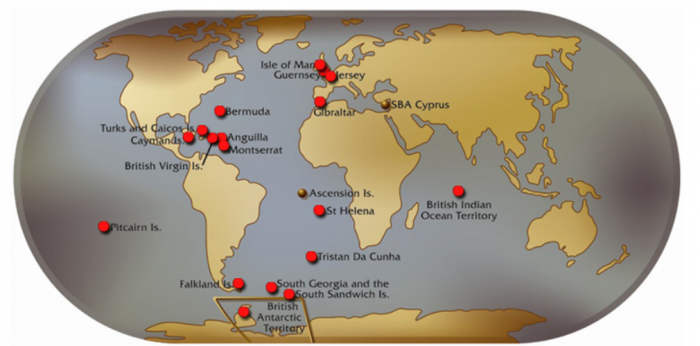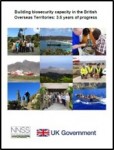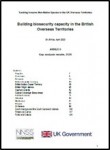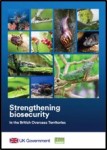The UK has 14 Overseas Territories (OTs) and three Crown Dependencies, all of which are islands except for the British Antarctic Territory, Cyprus Sovereign Base Areas and Gibraltar. The OTs together account for 94% of the UKs unique biodiversity and as such make a significant contribution to global biodiversity. Find out more about Biodiversity in the UK Overseas Territories.
Information on the OTs
- How do invasive non-native species impact on the OTs?
- How is UK Government responding?
- The OTs Biosecurity Project
- Learn about each Territory
- Biosecurity travel advice for visitors to the OTs
Resources for OTs
- Biosecurity toolkits
- Pest Risk Assessment resources
- Communications and education materials
- Horizon scanning results
- Prioritising containment and eradication action

How do invasive non-native species impact on the OTs?
The impacts of invasive non-native species on small islands are often much worse than elsewhere because the native flora and fauna have evolved in isolation from predators, competitors and diseases. As a result native species are less able to compete and defend themselves in the face of new threats. Since 1500 72% of global extinctions have occurred on islands and 67% of birds on oceanic islands are threatened by invasive non-native species (Baillie et al 2004). Being predominantly islands, the OTs are very vulnerable to the introduction of potentially harmful invasive non-native species, recognised as the biggest threat to island biodiversity, as well as to food security and sustainable development.
UK Government response
Together with the Foreign, Commonwealth & Development Office (FCDO) and the Joint Nature Conservation Committee (JNCC), Defra has agreed a Strategy for the Conservation and Sustainable Use of Biodiversity in the UK Overseas Territories. The Strategy aims to address the needs of the OTs, and has been built on an assessment of priorities for biodiversity conservation action carried out by the JNCC.
Read the Overseas Territories Strategy.
The OT Biosecurity Project
Tackling Invasive Non-native Species in the UK Overseas Territories
A project was carried out between 2016 and 2020 to improve the biosecurity of the OTs against invasive non-native species. It was led by the GB Non-native Species Secretariat (NNSS) and funded by the FCO’s Conflict, Stability and Security Fund (CSSF). The initial funding was £1m over 4 years and an additional £260k was secured for the final year. Overall, this amounted to less than £20,000 per territory per year.
At the end of the project the OTs had substantially strengthened their protection against the threat of invasive non-native species as a result of project activities. Activities involved 343 people within the OTs, 9 UK government and part-government bodies, and more than 150 external experts from 54 entities in the UK, Europe and USA. In addition, the project mobilised over £1m in co-finance, in effect almost doubling the project budget. The project continues with reduced funding, principally to provide technical support to the OTs on request.
Read more on the activities and achievements of the OT Biosecurity Project:
One Health approach
The one-health approach recognizes that the health of humans, animals and ecosystems are interconnected. It involves applying a coordinated, collaborative, multidisciplinary and cross-sectoral approach to address potential or existing risks that originate at the animal-human-ecosystems interface.
As the OTs move forward it is essential that the one health approach is accepted and promoted, recognizing biosecurity as an all-inclusive term that includes policy and regulation to protect agriculture, food and the environment from biological risk.
Read more on the one-health approach (pdf).





